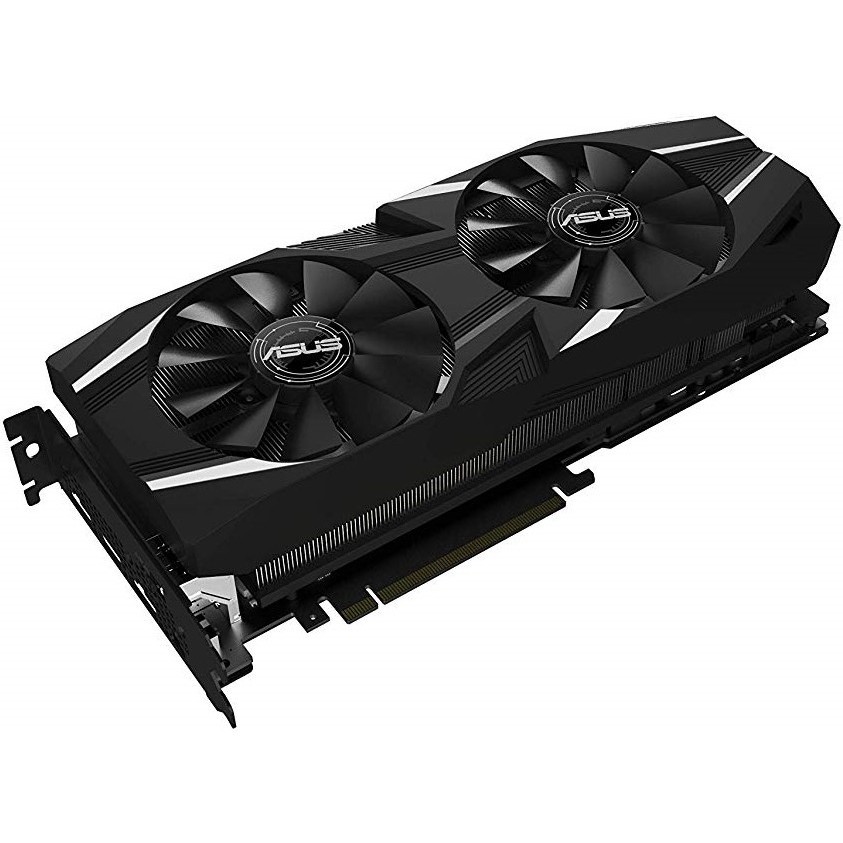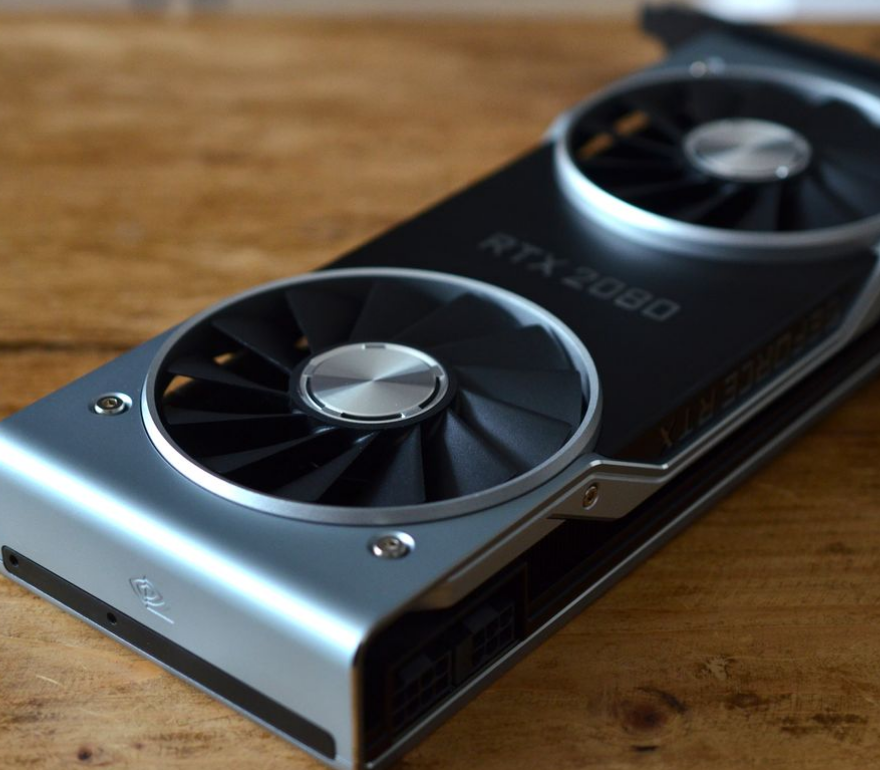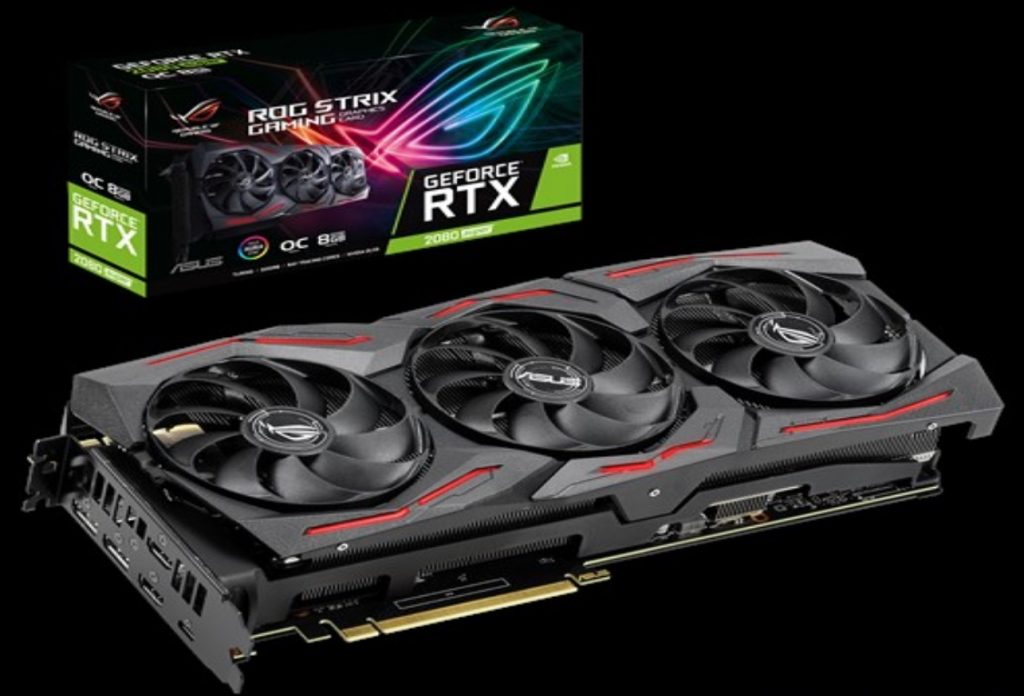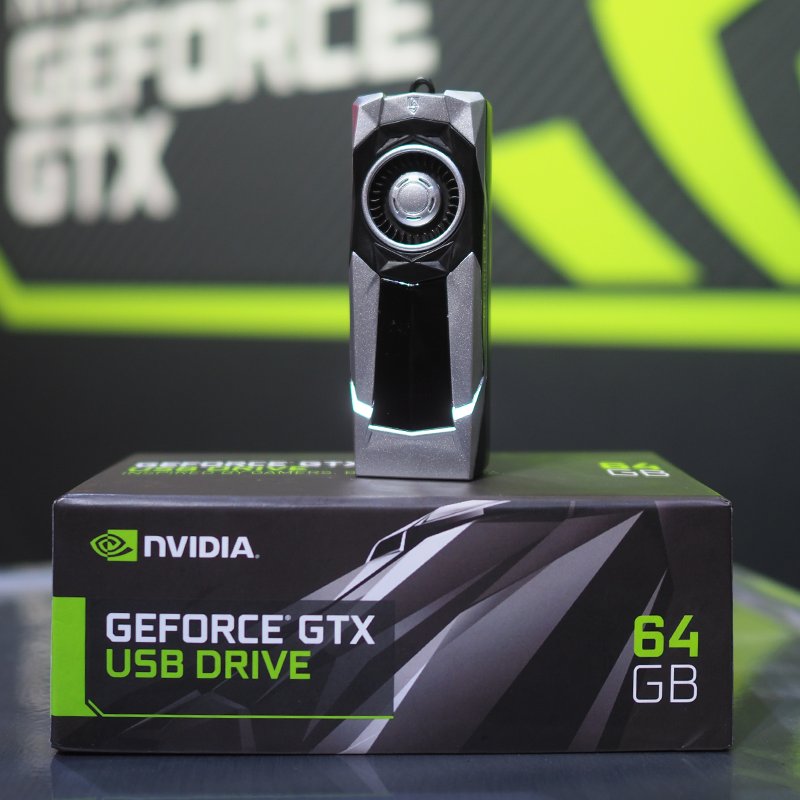PSA: The USB-C port on Nvidia RTX graphics cards isn’t just for VR
Here’s something you might not know: the USB-C VirtualLink port on the back of most Nvidia RTX graphics cards isn’t just for connecting VR headsets with a single cable, though that is why Nvidia included it. It also works as a completely standard USB-C port, so in theory you can plug in smartphones, USB hubs, headphones, card readers and even high-speed NVMe SSD storage directly into your GeForce graphics card. This is pretty handy, given that many motherboards only include a single USB-C port and many older models don’t include any at all. After learning it was possible, we put an RTX 2080’s USB-C port to the test.
In order to check the capabilities of the VirtualLink port, we plugged in as many USB-C devices, hubs and adapters as we could get our hands on. This felt a little odd — when’s the last time you plugged a USB mousepad into your graphics card? — but we did get some interesting results. Here’s what we tested, what worked and what we learned in the process.
- NVMe SSD enclosure: With an ADATA SX8200 Pro connected to our enclosure (one of the best SSDs for gaming!) we saw sequential speeds of around 750MB/s — far faster than any flash drive, but interestingly not as quick as the 1000MB/s we got when connecting the drive to our motherboard’s native USB-C port.
- USB 3.0 hub: This hub added seven USB 3.0 ports to our machine’s complement. With this, we were able to plug in an SD card reader, mice, keyboards and USB flash drives.
- USB-C to USB adapter: This simple adapter allowed any full-size USB device to be recognised by our computer, including drives, headsets and mice.
- Android smartphone: We connected our Galaxy S9+ with a USB-C to USB-C cable, allowing us to charge the phone and access its files in Windows. Having the right cable is important here, as a cheap cable only allowed for charging on both motherboard and RTX USB-C ports.
- Headphones: The Razer Hammerhead USB-C headphones we connected worked straight away, showing up as a new audio device in Windows 10.

- Ethernet adapter: With this connected, we recorded the same internet speeds as with our motherboard’s internal adapter.
- Monitors: With a DVI-D to USB-C adapter in hand, we were able to connect a DVI-only Crossover 27Q monitor and get its full resolution of 2560 x 1440. We also tried connecting a 4K monitor with a USB-C to DisplayPort adapter, and that worked well — as expected.
So out of the half-dozen devices and adapters we tested, all worked straight away — with the exception of the Android smartphone, which did require a good-quality USB-C cable. We did see reduced speeds on the most bandwidth-heavy test, i.e. the NVMe SSD, but by a relatively small margin that’s unlikely to affect usability. If you’ve already got USB-C devices or adapters for a USB-C phone or laptop, it’s worth testing them on your RTX-equipped PC to see if they work there too.
However, it’s important to mention that not all devices with USB-C connectors will necessarily work. For example, the USB-C port provided on RTX graphics cards is not a Thunderbolt 3 port, so devices that require the extra bandwidth that Thunderbolt 3 provides (40Gbps versus 10Gbps on USB 3.1) will not work.
For example, the USB-C port provided on RTX graphics cards is not a Thunderbolt 3 port, so devices that require the extra bandwidth that Thunderbolt 3 provides (40Gbps versus 10Gbps on USB 3.1) will not work.
Ironically, we weren’t able to test the actual stated purpose of the RTX series’ USB port: virtual reality. However, users online have reported successfully using an Apple Digital AV Multiport Adapter to connect their VR headsets to an RTX series graphics card using the USB-C input. This isn’t really worth doing unless you’re on a multi-monitor setup that already takes up all of your graphics card’s display outputs, but it’s good to know that it’s possible. Presumably, future VR headsets will come with USB-C support out of the box, making the VirtualLink functionality a more practical addition.
With the mixed feelings surrounding RTX and DLSS, the addition of a fully capable USB-C port isn’t going to suddenly make an RTX graphics card an essential purchase. USB-C VirtualLink isn’t even included throughout the series, with many RTX 2060 models dropping the port. Still, if you’ve already got an RTX card with USB-C, we’re hoping this PSA is at least a pleasant surprise.
Still, if you’ve already got an RTX card with USB-C, we’re hoping this PSA is at least a pleasant surprise.
GeForce RTX 30 doesn’t include USB-C port because VirtualLink is dead
Virtual & Augmented Reality and 3D
The VirtualLink standard was announced in 2018, but it never caught on. Now, the VR industry has seemingly abandoned the idea.
NVIDIA this week revealed the GeForce RTX 30 Series graphics card lineup, and you may have noticed that none of the cards include a USB-C port for VirtualLink support. It turns out that’s because the VirtualLink project is dead. Sadly, it never even got off the ground.
The VirtualLink connection was meant to be a revolutionary advancement in VR headset connectivity. It was supposed to be a single USB-C connection, which would deliver the video, audio, USB, and power signals from your computer to your VR headset in a single cable.
The specifications for the VirtualLink connection were established by the VirtualLink consortium, which comprised some of the VR industry’s biggest and most important players. Both NVIDIA and AMD were onboard, was were HTC, Oculus, Valve and Microsoft. With that kind of backing, VirtualLink appeared to have a lot of promise when it was announced in 2018.
Both NVIDIA and AMD were onboard, was were HTC, Oculus, Valve and Microsoft. With that kind of backing, VirtualLink appeared to have a lot of promise when it was announced in 2018.
Unfortunately, NVIDIA was the only company that really embraced the connection standard, and its support didn’t last very long. When the RTX 20 Series debuted, NVIDIA’s Founders Edition cards included a USB-C VirtualLink connection. However, third party AIB partners weren’t so supportive of the connection, and few of their cards had the port. By the time NVIDIA refreshed the 20 Series with the Super lineup, the VirtualLink port was already absent, but few people seemed to notice. Meanwhile, AMD never released a GPU with a VirtualLink port.
When Valve announced the Index VR headset, it also revealed an options VirtualLink connection, which gave us a glimmer of hope for budding standard. However, that hope was dashed when the company subsequently cancelled the adaptor citing stability issues with the connection. That was the last news we heard from the VirtualLink consortium about the project. We predicted then that VirtualLink was dead, and it appears that we right on the ball.
That was the last news we heard from the VirtualLink consortium about the project. We predicted then that VirtualLink was dead, and it appears that we right on the ball.
Since then, the project’s website has gone down and is now redirecting to the VirtualLink Wikipedia page. The VirtualLink consortium’s Chairman, NVIDIA’s Rambod Jacoby, has also moved on to a different role within NVIDIA. According to his LinkedIn page, Jacoby left the VR division and took on the principal product manager role for NVIDIA’s autonomous driving division in April 2019.
NVIDIA GEFORCE RTX 2080 Ti Founders Edition
| Today | Yesterday | 7 days ago | 30 days ago | ||
|---|---|---|---|---|---|
|
$2049.00 |
$2049.00 | $2049.00 | $2049.00 |
Buy |
|
|
* Prices last scanned on 2/3/2023 at 1:49 am CST — prices may not be accurate, click links above for the latest price. |
|||||
NEWS SOURCES:roadtovr.com, en.wikipedia.org
Kevin Carbotte
Kevin joined the TweakTown team in 2020 and has since kept us informed daily on the latest news. Kevin is a lifelong tech enthusiast. His fascination with computer technology started at a very young age when he watched a family friend install a new hard drive into the family PC. After building his first computer at 15, Kevin started selling custom computers. After graduating, Kevin spent ten years working in the IT industry. These days, he spends his time learning and writing about technology — specifically immersive technologies like augmented reality and virtual reality.
Newsletter Subscription
Similar News
-
Here’s when and where to watch NVIDIA unveil its next-gen GeForce
-
ZOTAC is preparing 8 new GeForce RTX 30 series cards so far
-
GeForce RTX 3070 should offer RTX 2080 Ti level performance for $599
-
There is no RTX 3080 Ti: RTX 3090 has 24GB RAM, RTX 3080 has 10GB RAM
-
NVIDIA GeForce RTX 3080 and RTX 3070 specs: here’s what we know so far
-
Say hello to ZOTAC’s new GeForce RTX 3090 Trinity graphics card
Related Tags
- AMD
- HTC
- Microsoft
- NVIDIA
- Oculus
- Valve
- GeForce
USB Type C Capabilities in RTX
Series Graphics Cards
News
Video cards with USB-C connector
Users may have noticed that on Nvidia Founders Edition video cards, in addition to the classic DisplayPort and HDMI, USB-C appeared. Many reverse models also have this connector. Why this port is needed and what are its capabilities, the specialists of the Eurogamer resource investigated and provided interesting results.
Many reverse models also have this connector. Why this port is needed and what are its capabilities, the specialists of the Eurogamer resource investigated and provided interesting results.
This port supports the VirtualLink standard, and is built by Nvidia engineers specifically to support virtual reality headsets. If you have a powerful computer with an RTX graphics card, then you can fully try out game projects in VR. The presence of USB-C allows you to quickly and conveniently connect headsets directly to the video processor, bypassing «intermediaries».
However, the USB-C port can be called almost universal, as it expands the possibilities of using your graphics card. The tests were done on the RTX 2080 model, but you can test the USB capabilities on any other RTX graphics card, not just the Founders Edition.
The first thing we decided to try out was a solid state drive. The Adata SSD model SX8200 was chosen as a test subject. Using an adapter, the drive was connected directly to the video card itself. The transfer speed reached 740 Mb per second. When connecting the same SSD to the USB-C on the motherboard, the speed was about 980 MB / s. Thus, the use of a video card as a place to connect an SSD is possible, at least with a slight loss in speed.
The transfer speed reached 740 Mb per second. When connecting the same SSD to the USB-C on the motherboard, the speed was about 980 MB / s. Thus, the use of a video card as a place to connect an SSD is possible, at least with a slight loss in speed.
The second test was connecting a USB hub. With its help, a whole set of gadgets was connected to the video card:
- computer mice and keyboards;
- wired headphones;
- SD card readers.
Each device worked without problems. For example, the Razer Hammerhead headphones were defined as a new sound device and were able to play musical compositions. An Ethernet adapter was connected, which was also defined in the device manager. Additionally, with the help of DVI-D to USB-C converters, it was possible to connect even 2 monitors, which significantly expands the capabilities of the video card.
Built-in USB Type C can be used to connect mobile phones. The testers tried to connect to the video card Samsung Galaxy S9+.

 We may earn an affiliate commission.
We may earn an affiliate commission.